HISTORY OF THE UNITED STATES OF AMERICA

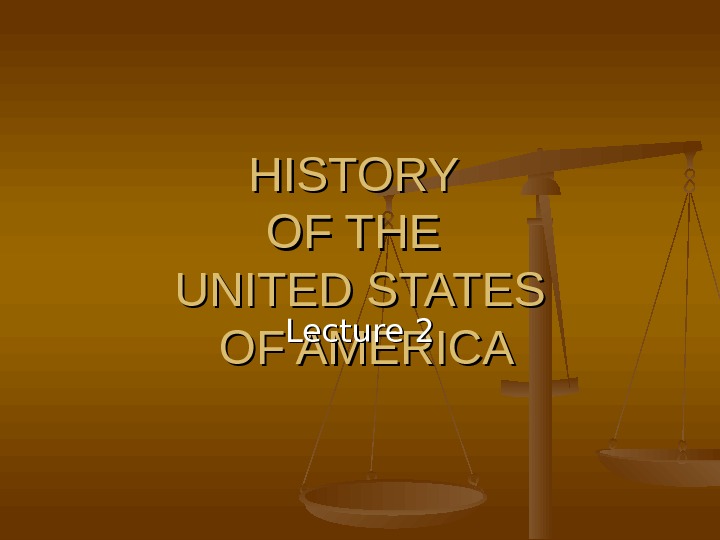
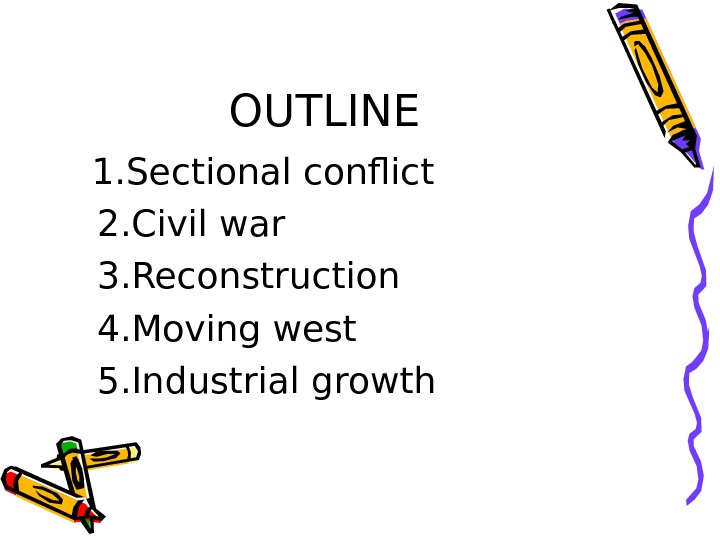



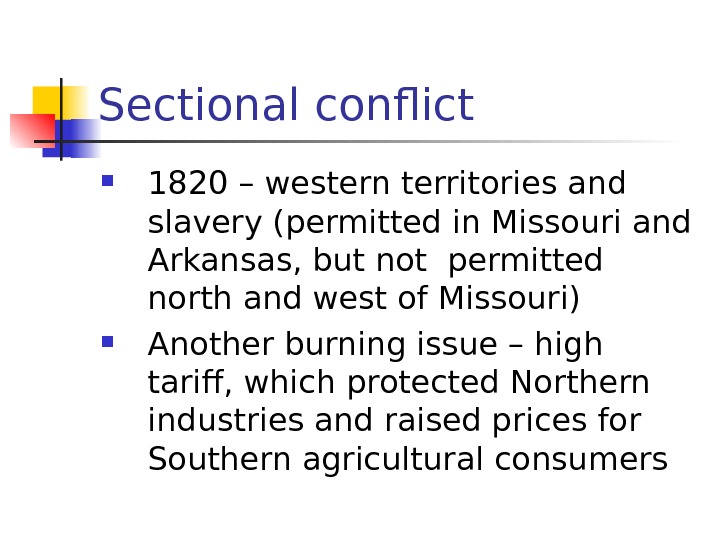
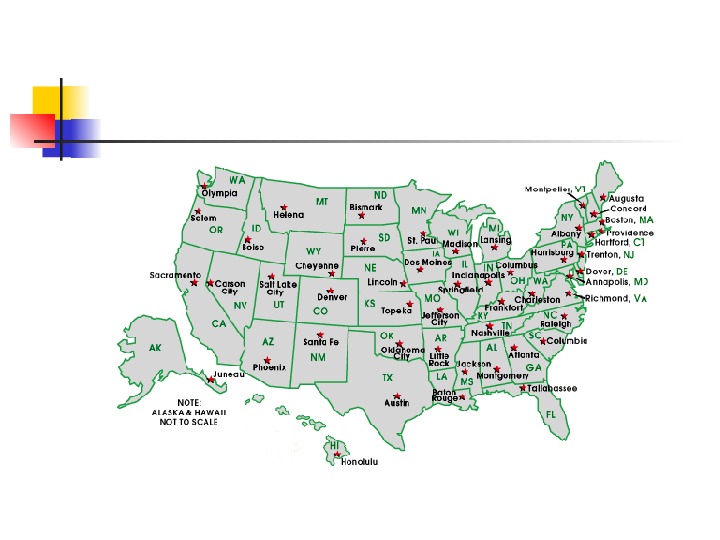

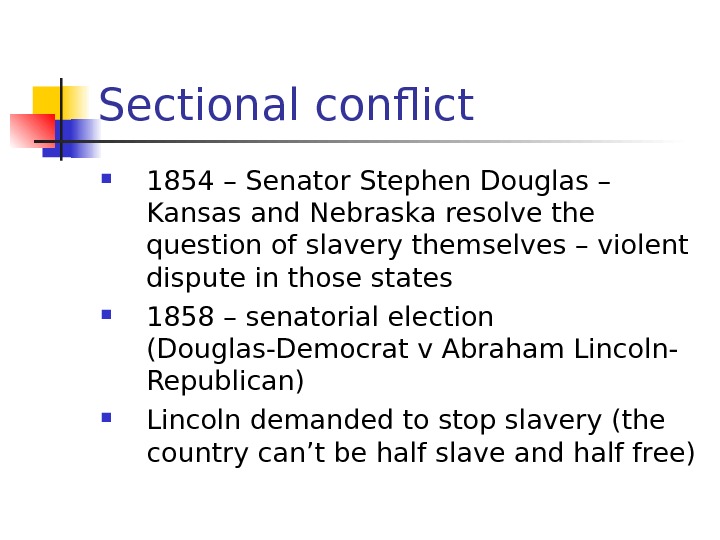
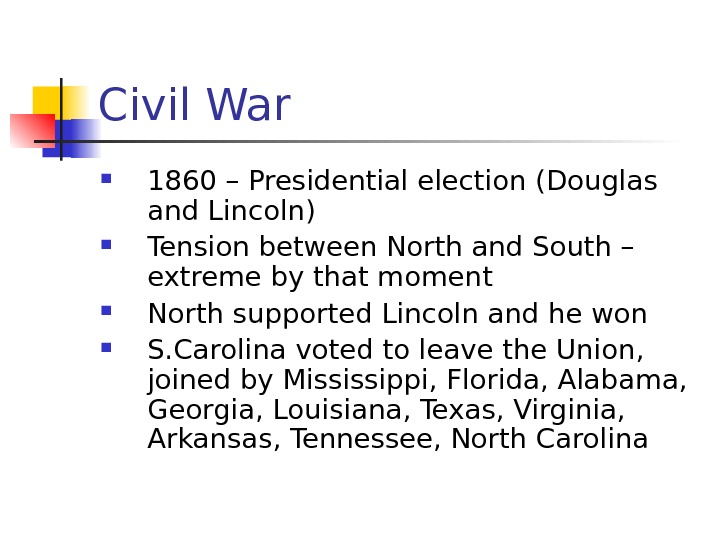
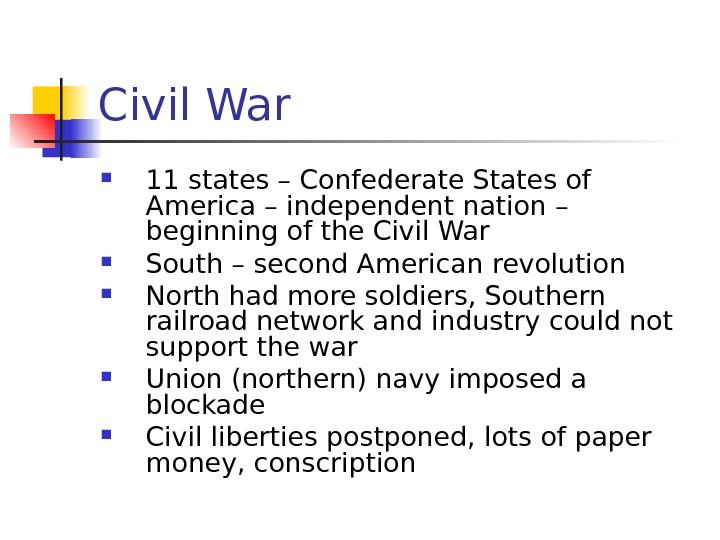
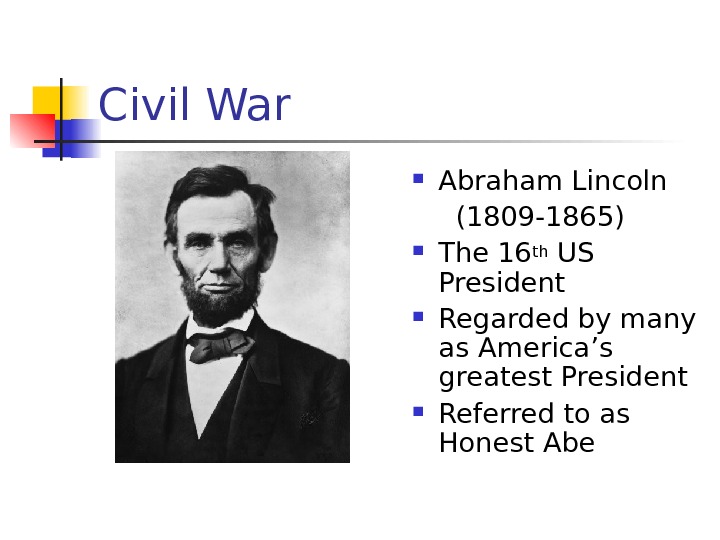



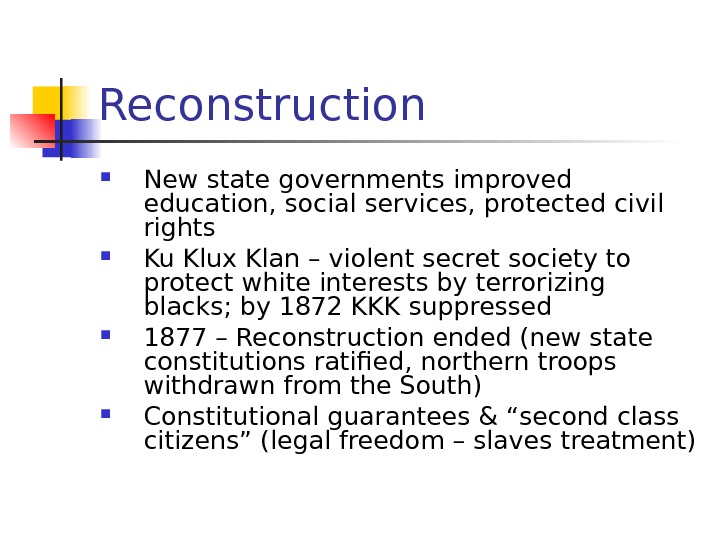
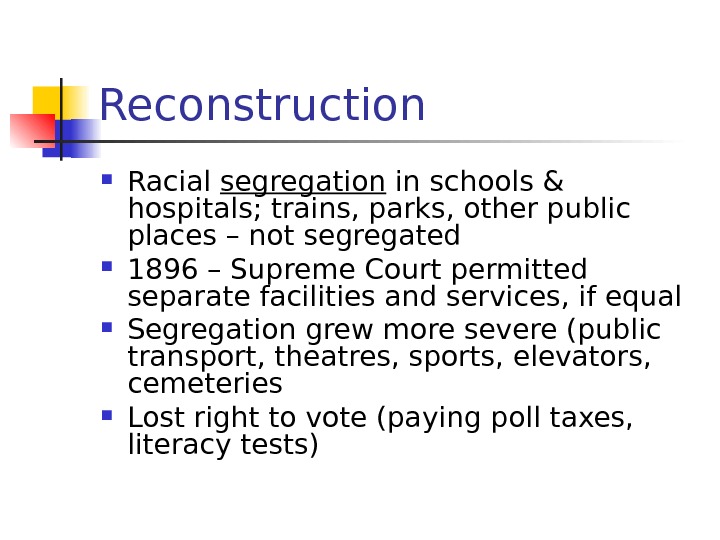
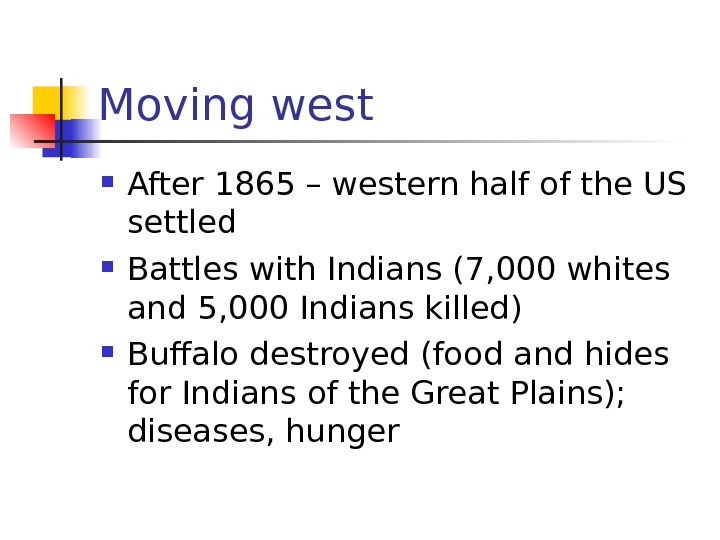
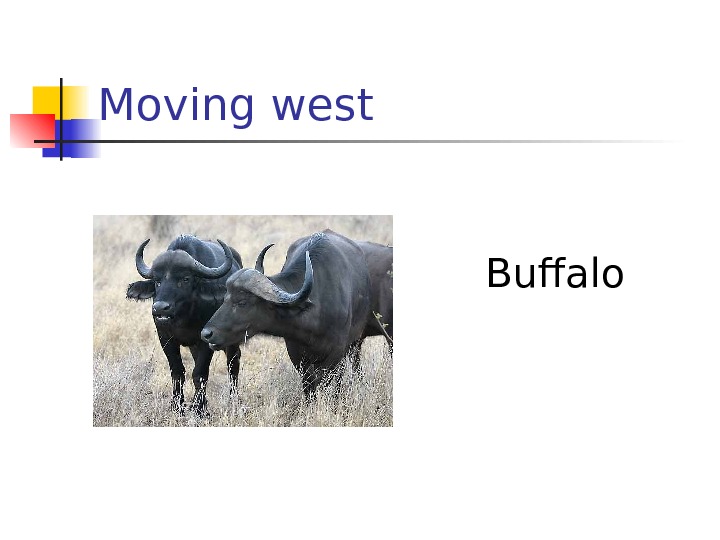
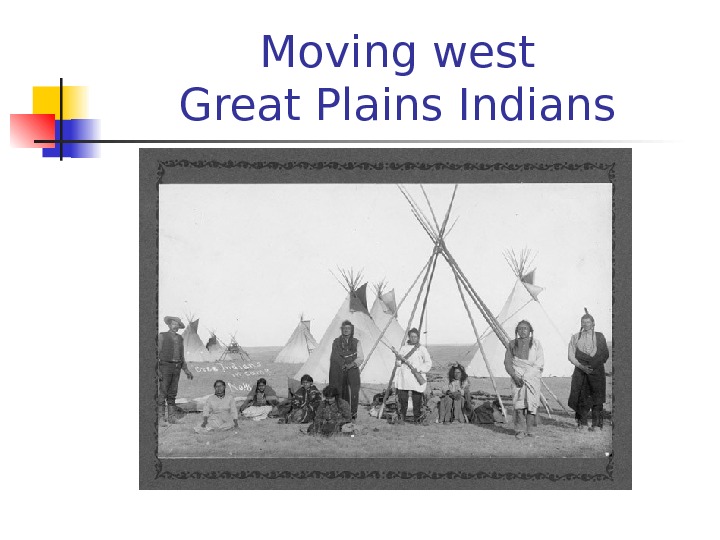

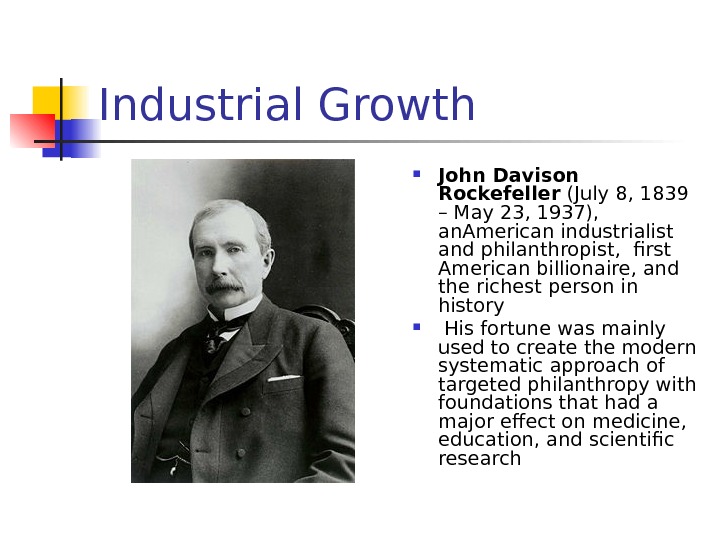


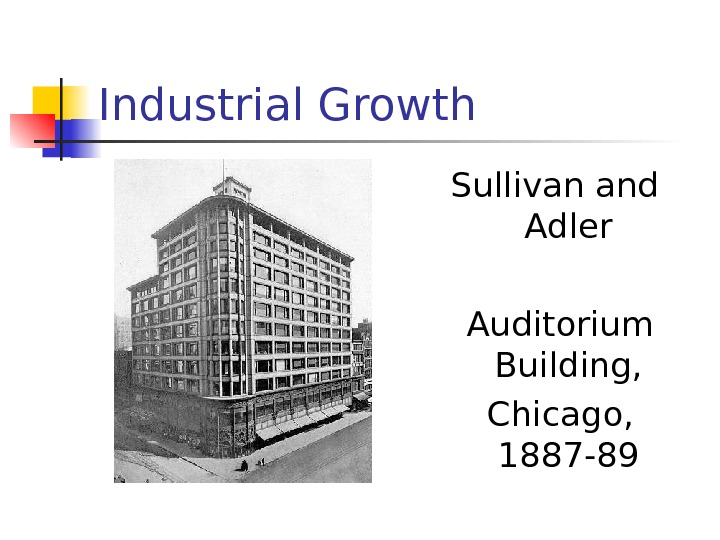

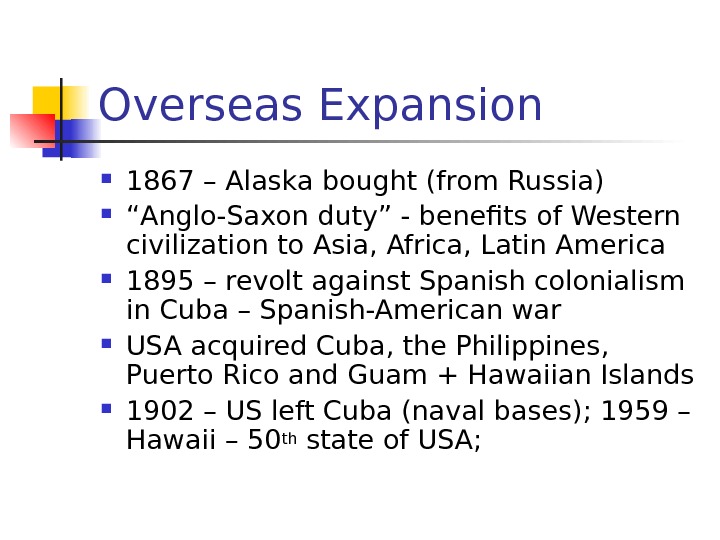
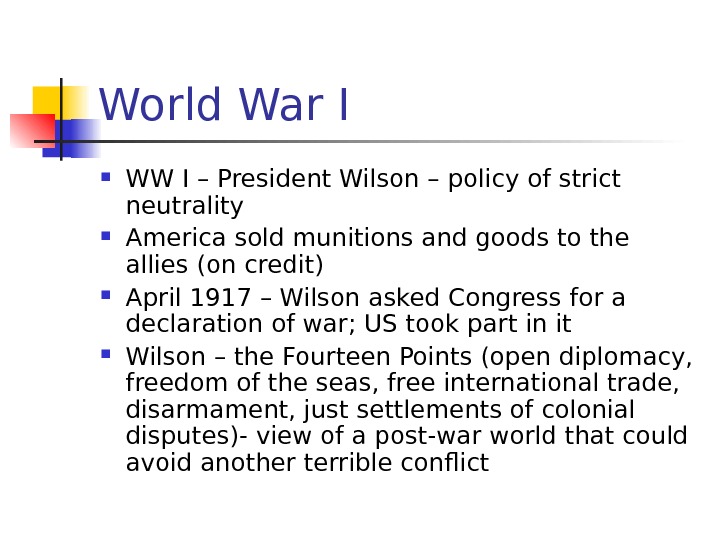

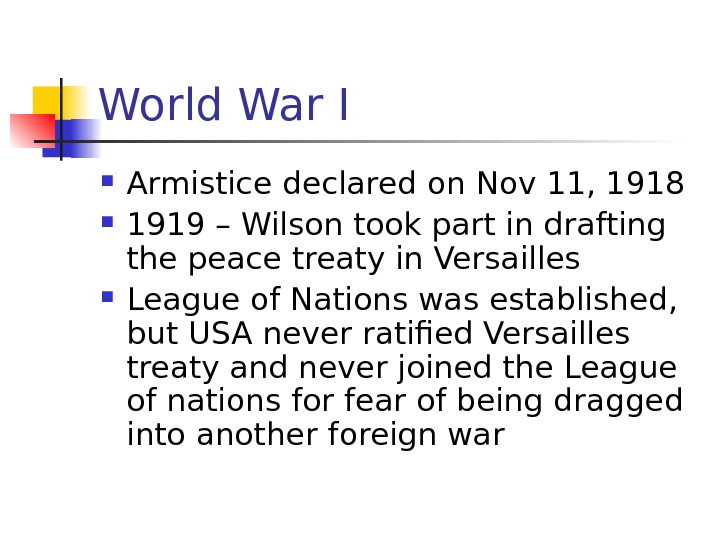
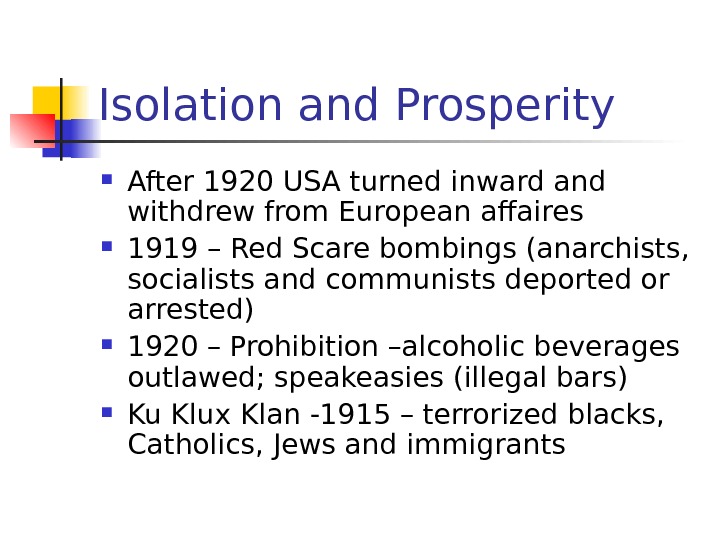

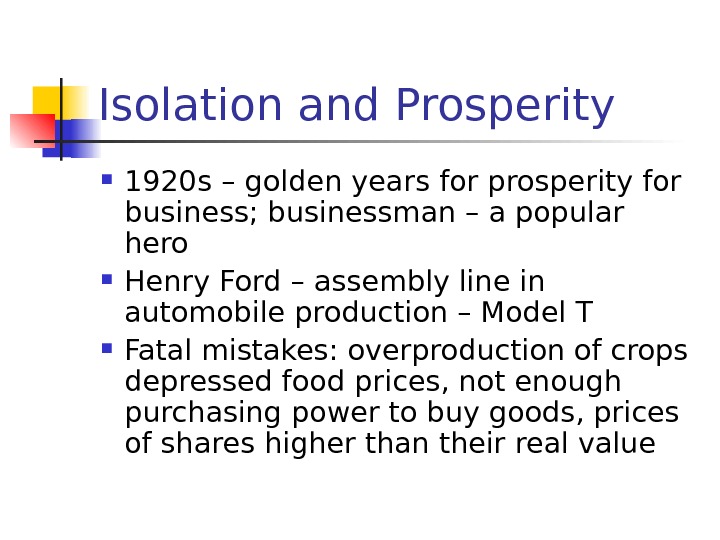
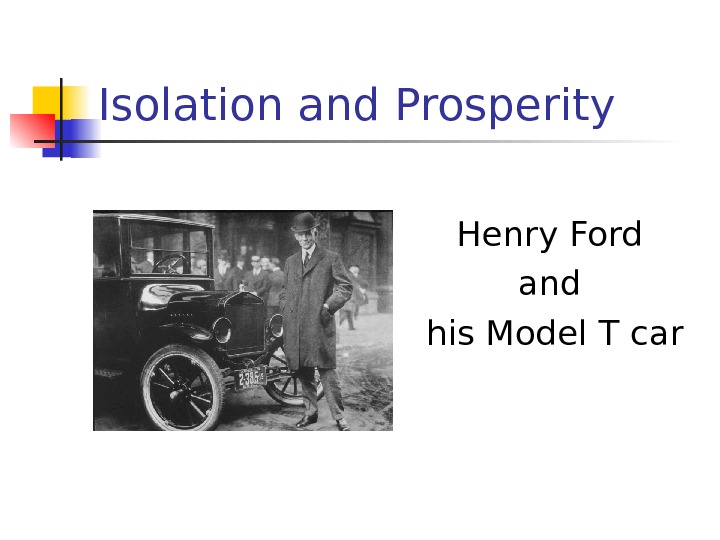
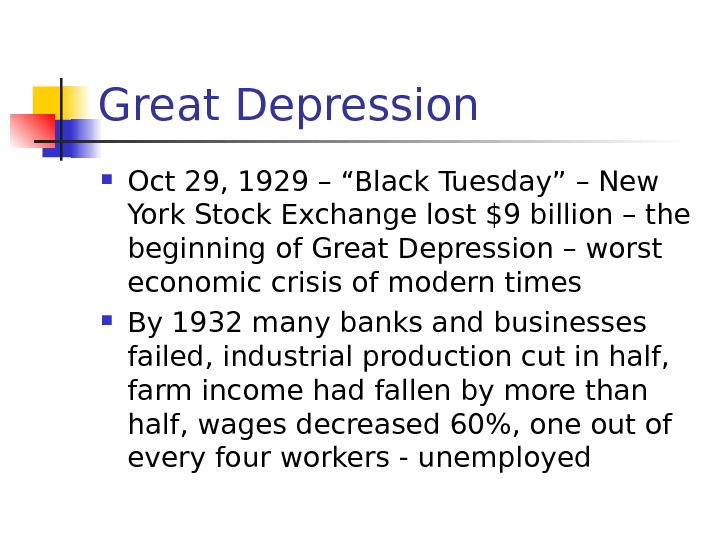
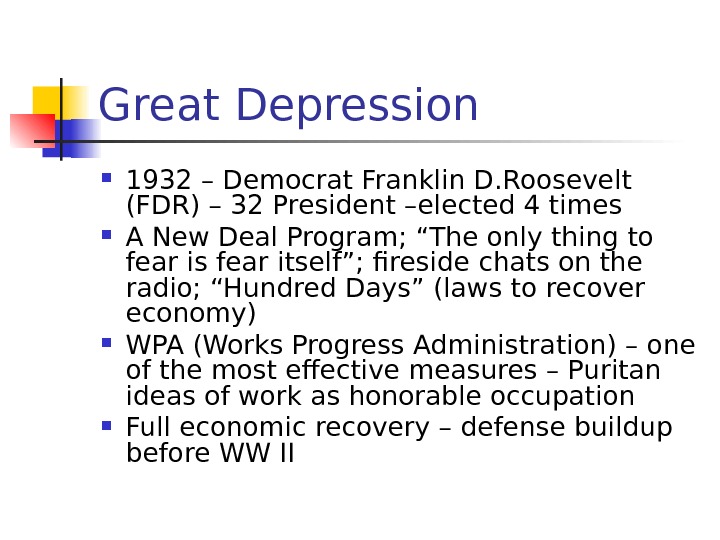
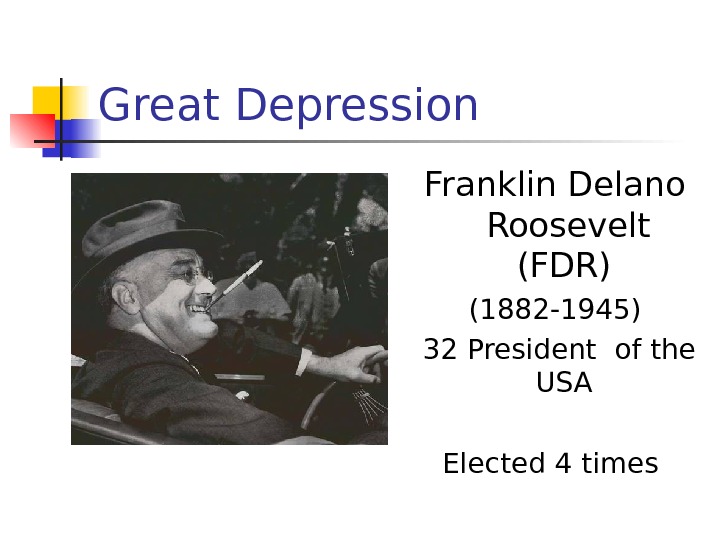

- Размер: 699 Кб
- Количество слайдов: 38
Описание презентации HISTORY OF THE UNITED STATES OF AMERICA по слайдам
 HISTORY OF THE UNITED STATES OF AMERICA Lecture
HISTORY OF THE UNITED STATES OF AMERICA Lecture
 OUTLINE 1. Sectional conflict 2. Civil war 3. Reconstruction 4. Moving west 5. Industrial growth
OUTLINE 1. Sectional conflict 2. Civil war 3. Reconstruction 4. Moving west 5. Industrial growth
 OUTLINE 6. Overseas expansion 7. World War I 8. Isolation and prosperity 9. Great Depression
OUTLINE 6. Overseas expansion 7. World War I 8. Isolation and prosperity 9. Great Depression
 RECOMMENDED LITERATURE • This lecture has been prepared on the basis of the US Information Agency handout by Jonathan Rose History: 1865 to 1929 (1986) • Any source available on the topic under study
RECOMMENDED LITERATURE • This lecture has been prepared on the basis of the US Information Agency handout by Jonathan Rose History: 1865 to 1929 (1986) • Any source available on the topic under study
 Sectional conflict Slavery – social contradiction of 1830 s-1850 s, point of dispute Importation of slaves outlawed in 1808, many Northern states abolished slavery Southern economy = large plantations (cotton, rice, tobacco, sugar), supported slavery
Sectional conflict Slavery – social contradiction of 1830 s-1850 s, point of dispute Importation of slaves outlawed in 1808, many Northern states abolished slavery Southern economy = large plantations (cotton, rice, tobacco, sugar), supported slavery
 Sectional conflict 1820 – western territories and slavery (permitted in Missouri and Arkansas, but not permitted north and west of Missouri) Another burning issue – high tariff, which protected Northern industries and raised prices for Southern agricultural consumers
Sectional conflict 1820 – western territories and slavery (permitted in Missouri and Arkansas, but not permitted north and west of Missouri) Another burning issue – high tariff, which protected Northern industries and raised prices for Southern agricultural consumers

 Sectional conflict 1845 – war with Mexico+$15 mln – Texas added, +California, Arizona, Nevada, Utah, New Mexico, Colorado 1846 – Oregon, Washington and Idaho acquired 1850 – Congress voted: California – a free state; Utah and New Mexico – decide themselves Fugitive Slave Act; Uncle Tom’s Cabin
Sectional conflict 1845 – war with Mexico+$15 mln – Texas added, +California, Arizona, Nevada, Utah, New Mexico, Colorado 1846 – Oregon, Washington and Idaho acquired 1850 – Congress voted: California – a free state; Utah and New Mexico – decide themselves Fugitive Slave Act; Uncle Tom’s Cabin
 Sectional conflict 1854 – Senator Stephen Douglas – Kansas and Nebraska resolve the question of slavery themselves – violent dispute in those states 1858 – senatorial election (Douglas-Democrat v Abraham Lincoln- Republican) Lincoln demanded to stop slavery (the country can’t be half slave and half free)
Sectional conflict 1854 – Senator Stephen Douglas – Kansas and Nebraska resolve the question of slavery themselves – violent dispute in those states 1858 – senatorial election (Douglas-Democrat v Abraham Lincoln- Republican) Lincoln demanded to stop slavery (the country can’t be half slave and half free)
 Civil War 1860 – Presidential election (Douglas and Lincoln) Tension between North and South – extreme by that moment North supported Lincoln and he won S. Carolina voted to leave the Union, joined by Mississippi, Florida, Alabama, Georgia, Louisiana, Texas, Virginia, Arkansas, Tennessee, North Carolina
Civil War 1860 – Presidential election (Douglas and Lincoln) Tension between North and South – extreme by that moment North supported Lincoln and he won S. Carolina voted to leave the Union, joined by Mississippi, Florida, Alabama, Georgia, Louisiana, Texas, Virginia, Arkansas, Tennessee, North Carolina
 Civil War 11 states – Confederate States of America – independent nation – beginning of the Civil War South – second American revolution North had more soldiers, Southern railroad network and industry could not support the war Union (northern) navy imposed a blockade Civil liberties postponed, lots of paper money, conscription
Civil War 11 states – Confederate States of America – independent nation – beginning of the Civil War South – second American revolution North had more soldiers, Southern railroad network and industry could not support the war Union (northern) navy imposed a blockade Civil liberties postponed, lots of paper money, conscription
 Civil War Abraham Lincoln (1809 -1865) The 16 th US President Regarded by many as America’s greatest President Referred to as Honest Abe
Civil War Abraham Lincoln (1809 -1865) The 16 th US President Regarded by many as America’s greatest President Referred to as Honest Abe
 Civil War Lincoln’s priorities: US – one country, get rid of slavery 1863, Jan 1 – Emancipation Proclamation (freedom to the slaves in areas of Confederacy) Summer 1863 – Gettysburg – three days of the largest battle on American soil General Robert Lee (Confederate) v Ulysses Grant (Union forces);
Civil War Lincoln’s priorities: US – one country, get rid of slavery 1863, Jan 1 – Emancipation Proclamation (freedom to the slaves in areas of Confederacy) Summer 1863 – Gettysburg – three days of the largest battle on American soil General Robert Lee (Confederate) v Ulysses Grant (Union forces);
 Civil War Vicksburg captured — Union forces controlled the entire Mississippi Valley, splitting the Confederacy in two April 1865 – confederate forces surrendered C. W. – most traumatic episode in American history, devastated the South, subjected it to military occupation; many soldiers died 2 results: 1865 — 13 th Amendment – abolition of slavery; US – one country
Civil War Vicksburg captured — Union forces controlled the entire Mississippi Valley, splitting the Confederacy in two April 1865 – confederate forces surrendered C. W. – most traumatic episode in American history, devastated the South, subjected it to military occupation; many soldiers died 2 results: 1865 — 13 th Amendment – abolition of slavery; US – one country
 Reconstruction After the war South devastated and economically destroyed Legal abolition of slavery and no real freedom former slaves, attempts to block blacks from voting “ Reconstruction” = reform of the Southern states By 1870 – South governed by groups of blacks, whites and transplanted Northerners
Reconstruction After the war South devastated and economically destroyed Legal abolition of slavery and no real freedom former slaves, attempts to block blacks from voting “ Reconstruction” = reform of the Southern states By 1870 – South governed by groups of blacks, whites and transplanted Northerners
 Reconstruction New state governments improved education, social services, protected civil rights Ku Klux Klan – violent secret society to protect white interests by terrorizing blacks; by 1872 KKK suppressed 1877 – Reconstruction ended (new state constitutions ratified, northern troops withdrawn from the South) Constitutional guarantees & “second class citizens” (legal freedom – slaves treatment)
Reconstruction New state governments improved education, social services, protected civil rights Ku Klux Klan – violent secret society to protect white interests by terrorizing blacks; by 1872 KKK suppressed 1877 – Reconstruction ended (new state constitutions ratified, northern troops withdrawn from the South) Constitutional guarantees & “second class citizens” (legal freedom – slaves treatment)
 Reconstruction Racial segregation in schools & hospitals; trains, parks, other public places – not segregated 1896 – Supreme Court permitted separate facilities and services, if equal Segregation grew more severe (public transport, theatres, sports, elevators, cemeteries Lost right to vote (paying poll taxes, literacy tests)
Reconstruction Racial segregation in schools & hospitals; trains, parks, other public places – not segregated 1896 – Supreme Court permitted separate facilities and services, if equal Segregation grew more severe (public transport, theatres, sports, elevators, cemeteries Lost right to vote (paying poll taxes, literacy tests)
 Moving west After 1865 – western half of the US settled Battles with Indians (7, 000 whites and 5, 000 Indians killed) Buffalo destroyed (food and hides for Indians of the Great Plains); diseases, hunger
Moving west After 1865 – western half of the US settled Battles with Indians (7, 000 whites and 5, 000 Indians killed) Buffalo destroyed (food and hides for Indians of the Great Plains); diseases, hunger
 Moving west Buffalo
Moving west Buffalo
 Moving west Great Plains Indians
Moving west Great Plains Indians
 Industrial Growth End of the 19 th c-beg of the 20 th c – US became world’s leading industrial power 1869 – first transcontinental railroad completed Standard Oil Company – John D. Rockefeller – petroleum industry Steel mills & iron mines – Andrew Carnegie (sold in 1901 for $500 000 mln)
Industrial Growth End of the 19 th c-beg of the 20 th c – US became world’s leading industrial power 1869 – first transcontinental railroad completed Standard Oil Company – John D. Rockefeller – petroleum industry Steel mills & iron mines – Andrew Carnegie (sold in 1901 for $500 000 mln)
 Industrial Growth John Davison Rockefeller (July 8, 1839 – May 23, 1937), an. American industrialist and philanthropist, first American billionaire, and the richest person in history His fortune was mainly used to create the modern systematic approach of targeted philanthropy with foundations that had a major effect on medicine, education, and scientific research
Industrial Growth John Davison Rockefeller (July 8, 1839 – May 23, 1937), an. American industrialist and philanthropist, first American billionaire, and the richest person in history His fortune was mainly used to create the modern systematic approach of targeted philanthropy with foundations that had a major effect on medicine, education, and scientific research
 Industrial Growth Andrew Carnegie (1835 -1919) Carnegie donated nearly $350 million to education, research, and art institutions, founded the Carnegie Technical Schools to make a contribution to both research and education; built Carnegie Hall, a grand concert hall, in New York City. Carnegie also founded a number of libraries throughout the US
Industrial Growth Andrew Carnegie (1835 -1919) Carnegie donated nearly $350 million to education, research, and art institutions, founded the Carnegie Technical Schools to make a contribution to both research and education; built Carnegie Hall, a grand concert hall, in New York City. Carnegie also founded a number of libraries throughout the US
 Industrial Growth Inventions in electric industry – telephone, phonograph, light bulb, motion pictures, alternating current motor and transformer) Chicago – Louis Sullivan – steelframe construction – skyscraper US – hospitable to inventors, free enterprise
Industrial Growth Inventions in electric industry – telephone, phonograph, light bulb, motion pictures, alternating current motor and transformer) Chicago – Louis Sullivan – steelframe construction – skyscraper US – hospitable to inventors, free enterprise
 Industrial Growth Sullivan and Adler Auditorium Building, Chicago, 1887 —
Industrial Growth Sullivan and Adler Auditorium Building, Chicago, 1887 —
 Industrial Growth “ Trusts” – huge combinations of corporations – monopolies (oil industry) Efficient production and cheap goods, but destroyed smaller competitors and set high prices for transportation of agricultural produce 1890 – government regulation – Sherman Antitrust Act (banned trusts, mergers and business agreements)
Industrial Growth “ Trusts” – huge combinations of corporations – monopolies (oil industry) Efficient production and cheap goods, but destroyed smaller competitors and set high prices for transportation of agricultural produce 1890 – government regulation – Sherman Antitrust Act (banned trusts, mergers and business agreements)
 Overseas Expansion 1867 – Alaska bought (from Russia) “ Anglo-Saxon duty” — benefits of Western civilization to Asia, Africa, Latin America 1895 – revolt against Spanish colonialism in Cuba – Spanish-American war USA acquired Cuba, the Philippines, Puerto Rico and Guam + Hawaiian Islands 1902 – US left Cuba (naval bases); 1959 – Hawaii – 50 th state of USA;
Overseas Expansion 1867 – Alaska bought (from Russia) “ Anglo-Saxon duty” — benefits of Western civilization to Asia, Africa, Latin America 1895 – revolt against Spanish colonialism in Cuba – Spanish-American war USA acquired Cuba, the Philippines, Puerto Rico and Guam + Hawaiian Islands 1902 – US left Cuba (naval bases); 1959 – Hawaii – 50 th state of USA;
 World War I WW I – President Wilson – policy of strict neutrality America sold munitions and goods to the allies (on credit) April 1917 – Wilson asked Congress for a declaration of war; US took part in it Wilson – the Fourteen Points (open diplomacy, freedom of the seas, free international trade, disarmament, just settlements of colonial disputes)- view of a post-war world that could avoid another terrible conflict
World War I WW I – President Wilson – policy of strict neutrality America sold munitions and goods to the allies (on credit) April 1917 – Wilson asked Congress for a declaration of war; US took part in it Wilson – the Fourteen Points (open diplomacy, freedom of the seas, free international trade, disarmament, just settlements of colonial disputes)- view of a post-war world that could avoid another terrible conflict
 World War I Thomas Woodrow Wilson (December 28, 1856 – February 3, 1924) 28 th President of the USA Awarded with the Nobel Peace Prize in 1919.
World War I Thomas Woodrow Wilson (December 28, 1856 – February 3, 1924) 28 th President of the USA Awarded with the Nobel Peace Prize in 1919.
 World War I Armistice declared on Nov 11, 1918 1919 – Wilson took part in drafting the peace treaty in Versailles League of Nations was established, but USA never ratified Versailles treaty and never joined the League of nations for fear of being dragged into another foreign war
World War I Armistice declared on Nov 11, 1918 1919 – Wilson took part in drafting the peace treaty in Versailles League of Nations was established, but USA never ratified Versailles treaty and never joined the League of nations for fear of being dragged into another foreign war
 Isolation and Prosperity After 1920 USA turned inward and withdrew from European affaires 1919 – Red Scare bombings (anarchists, socialists and communists deported or arrested) 1920 – Prohibition –alcoholic beverages outlawed; speakeasies (illegal bars) Ku Klux Klan -1915 – terrorized blacks, Catholics, Jews and immigrants
Isolation and Prosperity After 1920 USA turned inward and withdrew from European affaires 1919 – Red Scare bombings (anarchists, socialists and communists deported or arrested) 1920 – Prohibition –alcoholic beverages outlawed; speakeasies (illegal bars) Ku Klux Klan -1915 – terrorized blacks, Catholics, Jews and immigrants
 Isolation and Prosperity Flowering of black literature = the “Harlem Renaissance”; jazz – George Gershwin 1925 – “monkey trial” –John T. Scopes prosecuted for teaching Darwin’s theory in Tennessee public school (clash between modern ideas and traditional values)
Isolation and Prosperity Flowering of black literature = the “Harlem Renaissance”; jazz – George Gershwin 1925 – “monkey trial” –John T. Scopes prosecuted for teaching Darwin’s theory in Tennessee public school (clash between modern ideas and traditional values)
 Isolation and Prosperity 1920 s – golden years for prosperity for business; businessman – a popular hero Henry Ford – assembly line in automobile production – Model T Fatal mistakes: overproduction of crops depressed food prices, not enough purchasing power to buy goods, prices of shares higher than their real value
Isolation and Prosperity 1920 s – golden years for prosperity for business; businessman – a popular hero Henry Ford – assembly line in automobile production – Model T Fatal mistakes: overproduction of crops depressed food prices, not enough purchasing power to buy goods, prices of shares higher than their real value
 Isolation and Prosperity Henry Ford and his Model T car
Isolation and Prosperity Henry Ford and his Model T car
 Great Depression Oct 29, 1929 – “Black Tuesday” – New York Stock Exchange lost $9 billion – the beginning of Great Depression – worst economic crisis of modern times By 1932 many banks and businesses failed, industrial production cut in half, farm income had fallen by more than half, wages decreased 60%, one out of every four workers — unemployed
Great Depression Oct 29, 1929 – “Black Tuesday” – New York Stock Exchange lost $9 billion – the beginning of Great Depression – worst economic crisis of modern times By 1932 many banks and businesses failed, industrial production cut in half, farm income had fallen by more than half, wages decreased 60%, one out of every four workers — unemployed
 Great Depression 1932 – Democrat Franklin D. Roosevelt (FDR) – 32 President –elected 4 times A New Deal Program; “The only thing to fear is fear itself”; fireside chats on the radio; “Hundred Days” (laws to recover economy) WPA (Works Progress Administration) – one of the most effective measures – Puritan ideas of work as honorable occupation Full economic recovery – defense buildup before WW II
Great Depression 1932 – Democrat Franklin D. Roosevelt (FDR) – 32 President –elected 4 times A New Deal Program; “The only thing to fear is fear itself”; fireside chats on the radio; “Hundred Days” (laws to recover economy) WPA (Works Progress Administration) – one of the most effective measures – Puritan ideas of work as honorable occupation Full economic recovery – defense buildup before WW II
 Great Depression Franklin Delano Roosevelt (FDR) (1882 -1945) 32 President of the USA Elected 4 times
Great Depression Franklin Delano Roosevelt (FDR) (1882 -1945) 32 President of the USA Elected 4 times
 PBS American Experience series Online films about American History (including Great Depression) http : // www. pbs. org / wgbh / americanexperience / films /? film-online
PBS American Experience series Online films about American History (including Great Depression) http : // www. pbs. org / wgbh / americanexperience / films /? film-online

